The subject of the thesis is the utilization of the hot spring in Kavasila, Ioannina, Greece through the design of bath facilities equipped with accommodation units. The sulphurous spring is located on the left bank of the Sarantaporos River, north of Konitsa, opposite the old Baths of Pyxaria that were bombed during World War II. Access to the hot spring is via a motorway or a dirt path from the Monastery of Panagia, a stone church dating back to 1816.
The main objectives of the project were the integration of the facilities into the special environment of the site, the utilization of the existing path (paving and placement of sculptures at points along the route), and the design of new paths that would connect the various operational units through walkways, contributing to the development of an interactive human-landscape relationship.
The bathing facilities were chosen to be located at the foot of the mountain, in direct relation to the location of the spring, highlighting the natural flow of the hot river, which the building should "hug" by creating an inward space for the bathing process. The guesthouses, being separate units, were chosen to be placed in the woods, thereby giving the visitor the opportunity to experience hospitality within the wild landscape.
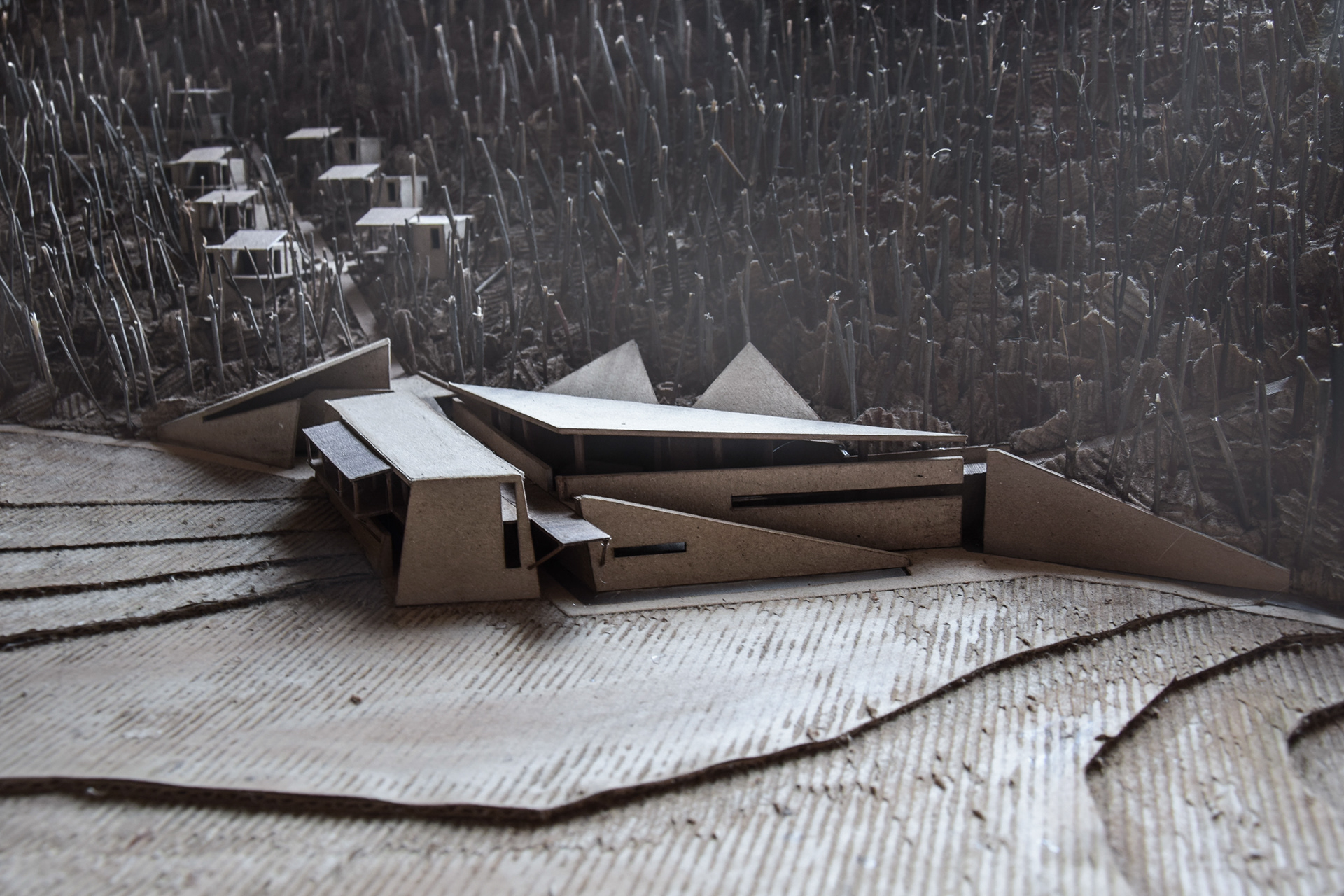
Thermal Baths and Guest Houses | Model, scale 1:200
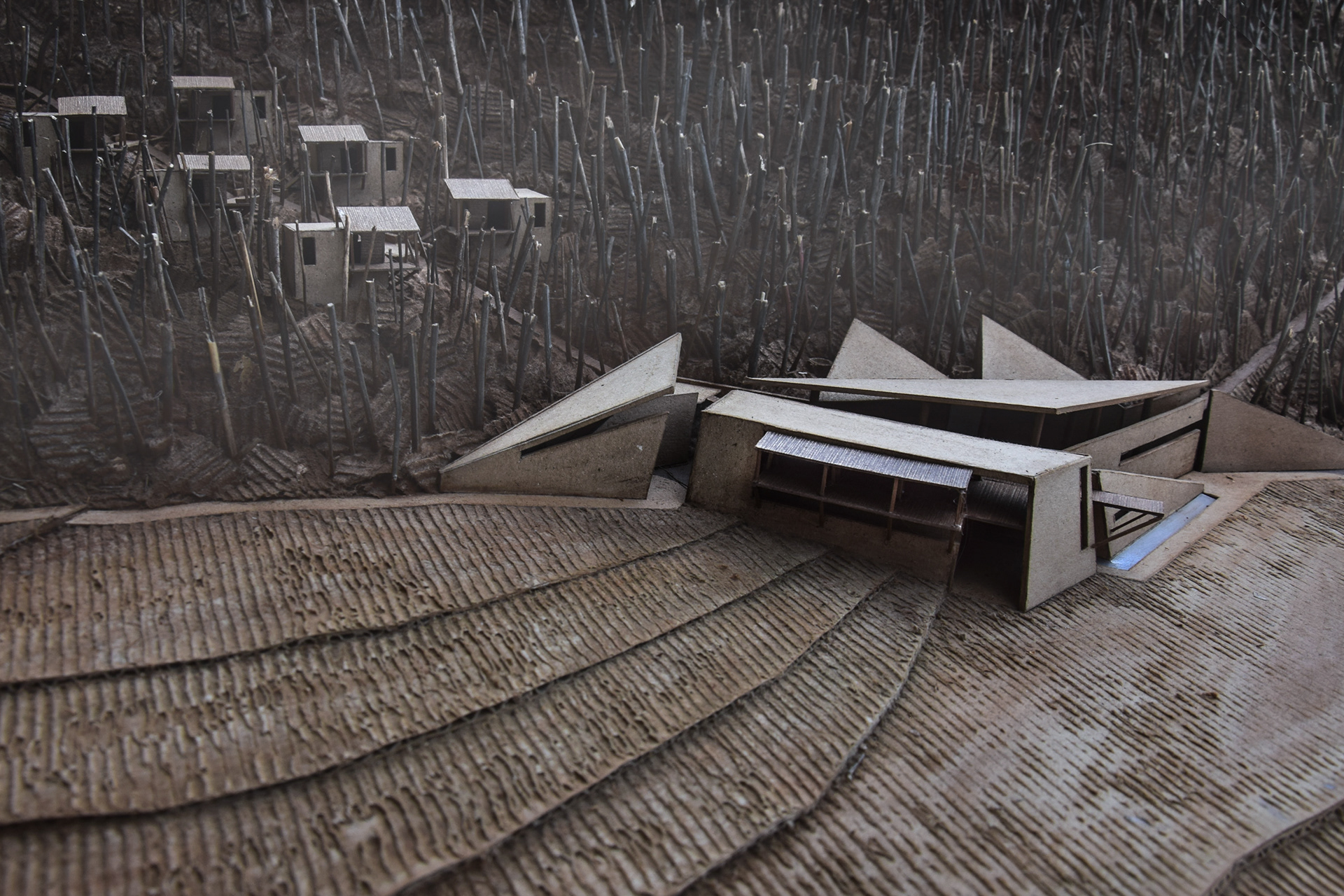
Thermal Baths and Guest Houses | Model, scale 1:200
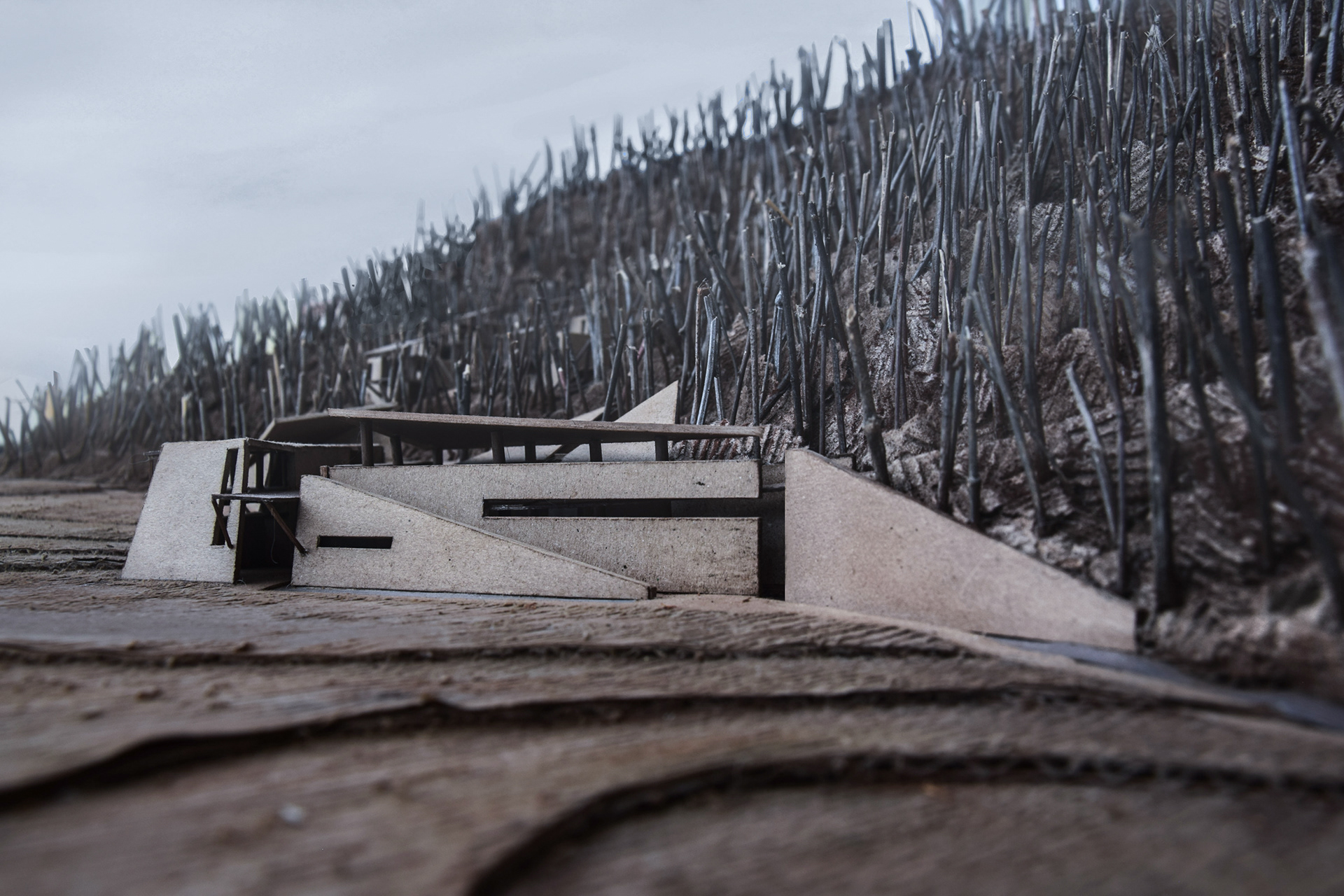
Thermal Baths and Guest Houses | Model, scale 1:200
Thermal Baths and Guest Houses | Model, scale 1:200
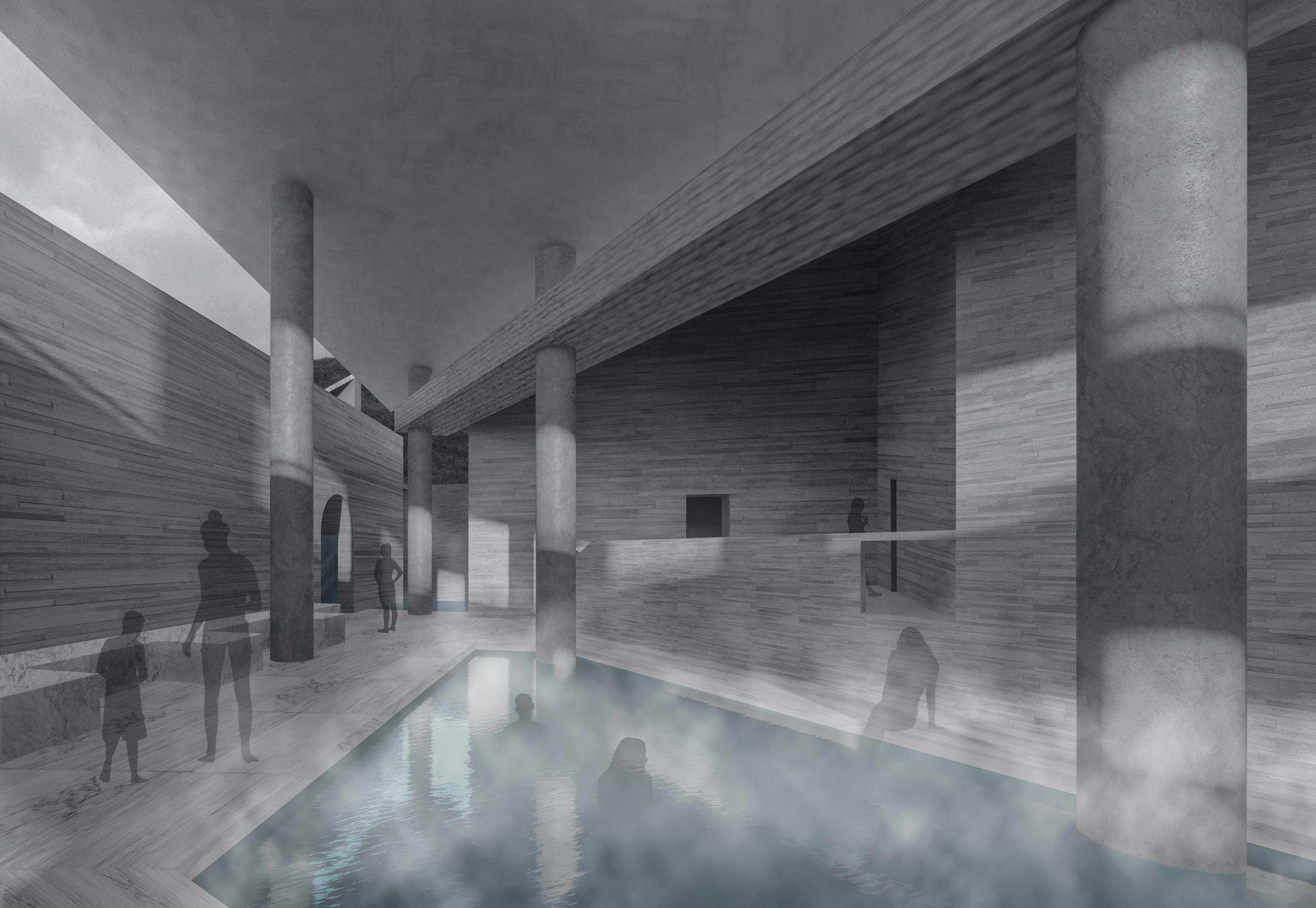

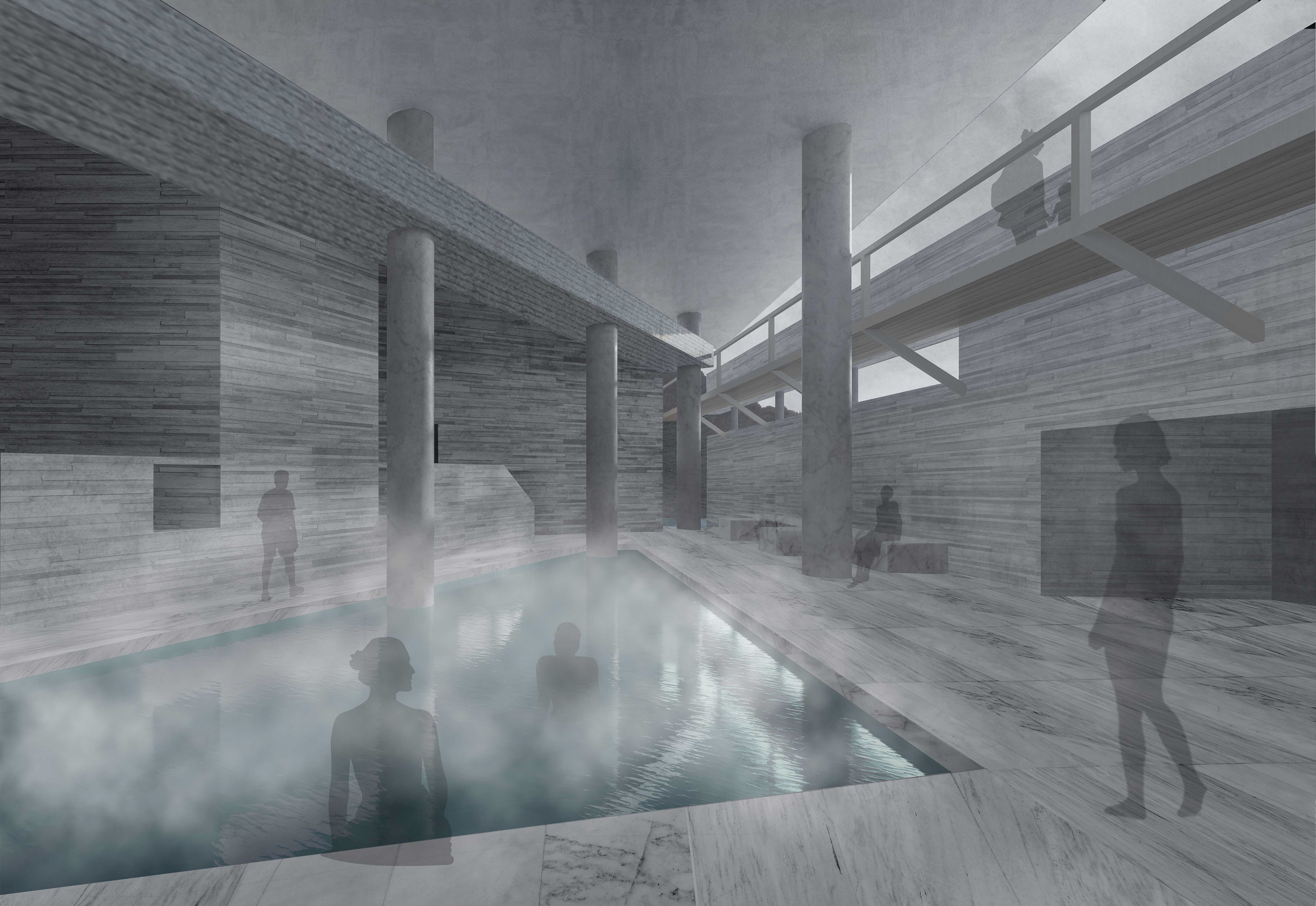
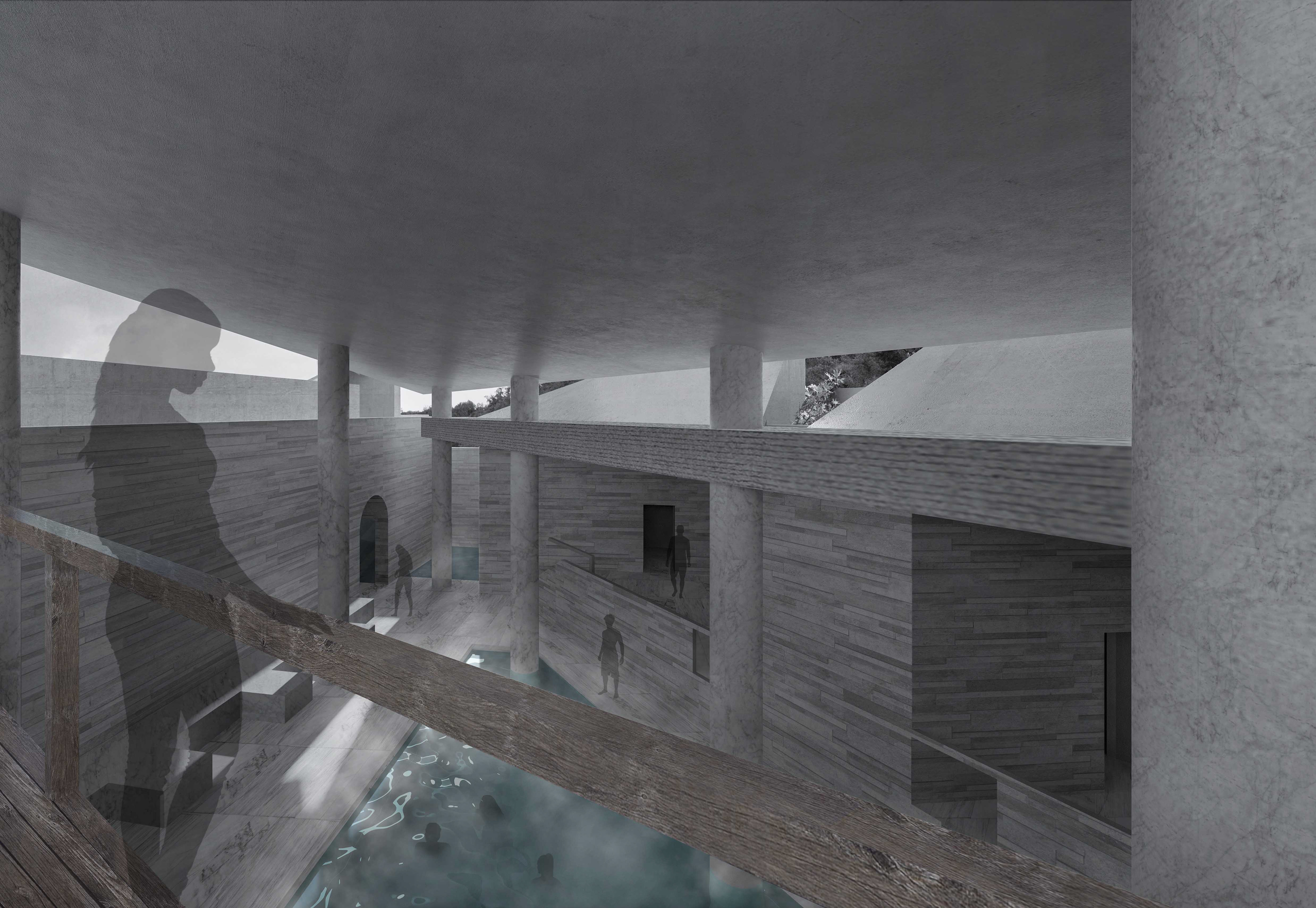
Thermal Baths | 3D models

Guest House | Model, scale 1:100
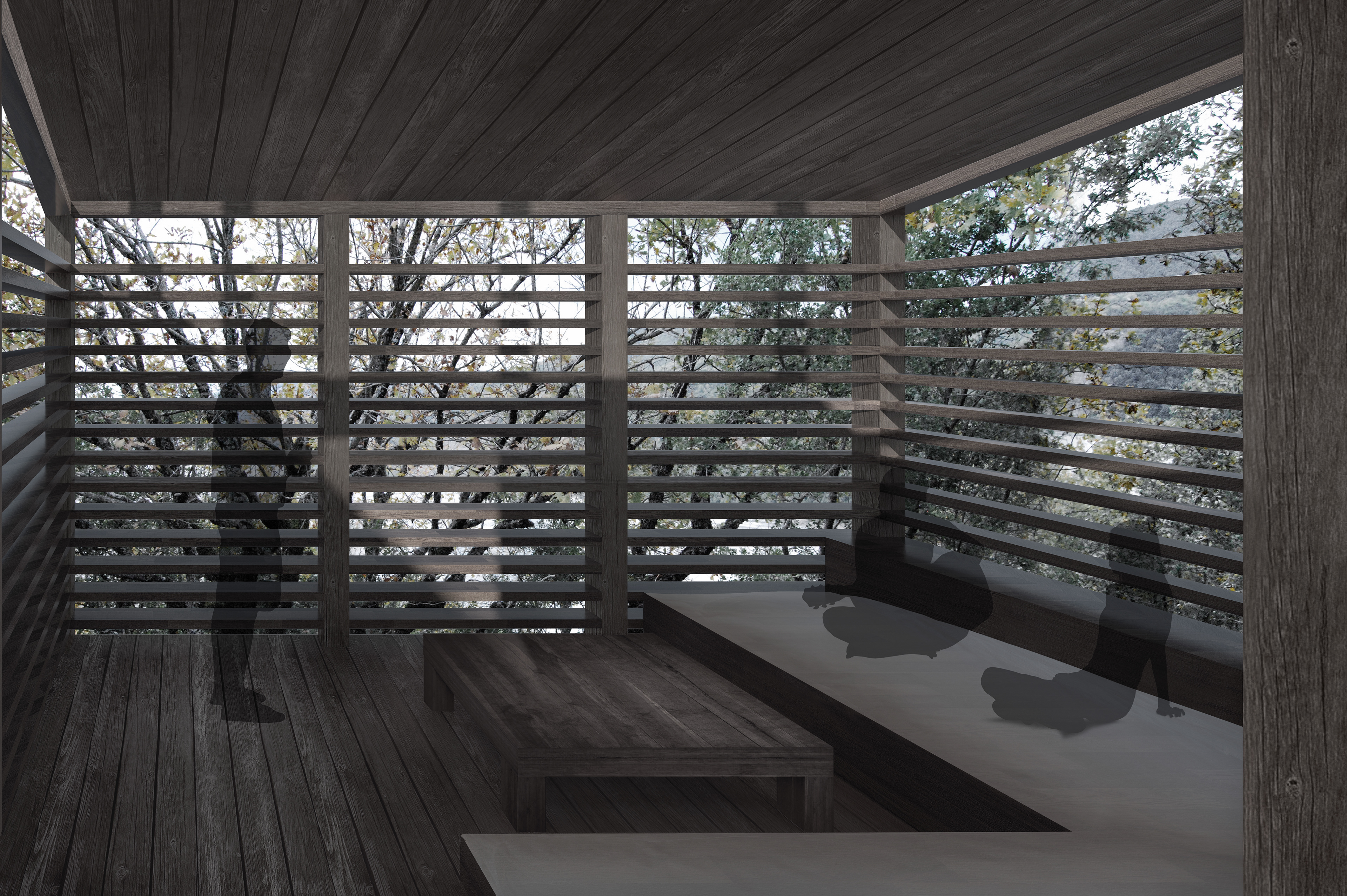
Guest House | 3D model
Guest House | Model, scale 1:100 - 3D model
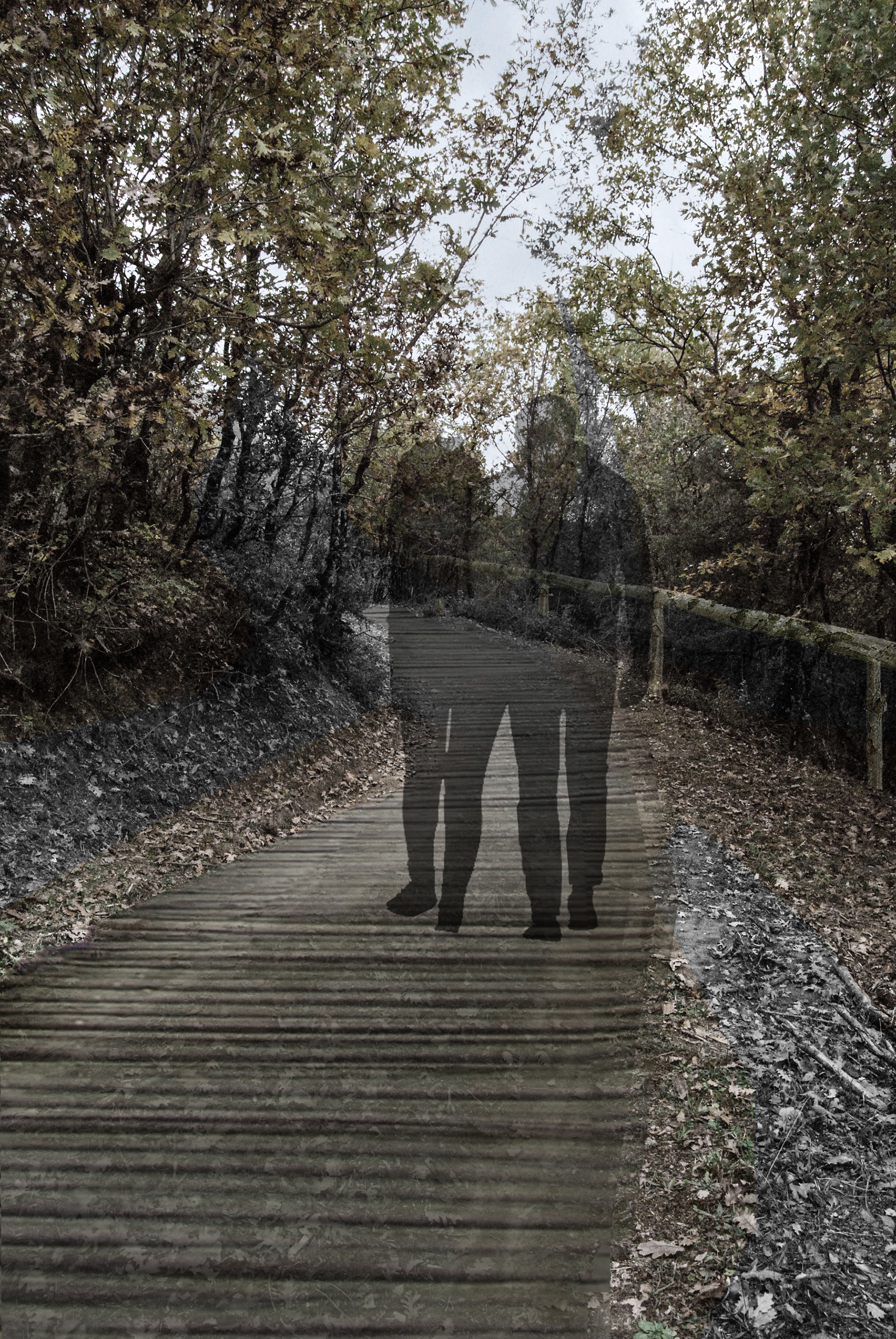
Surrounding Area: Paving & Sculpture Placement | Photoshop Collages

Surrounding Area: Paving & Sculpture Placement | Photoshop Collages

Surrounding Area: Paving & Sculpture Placement | Photoshop Collages
Paving & Sculpture Placement | Photoshop Collages
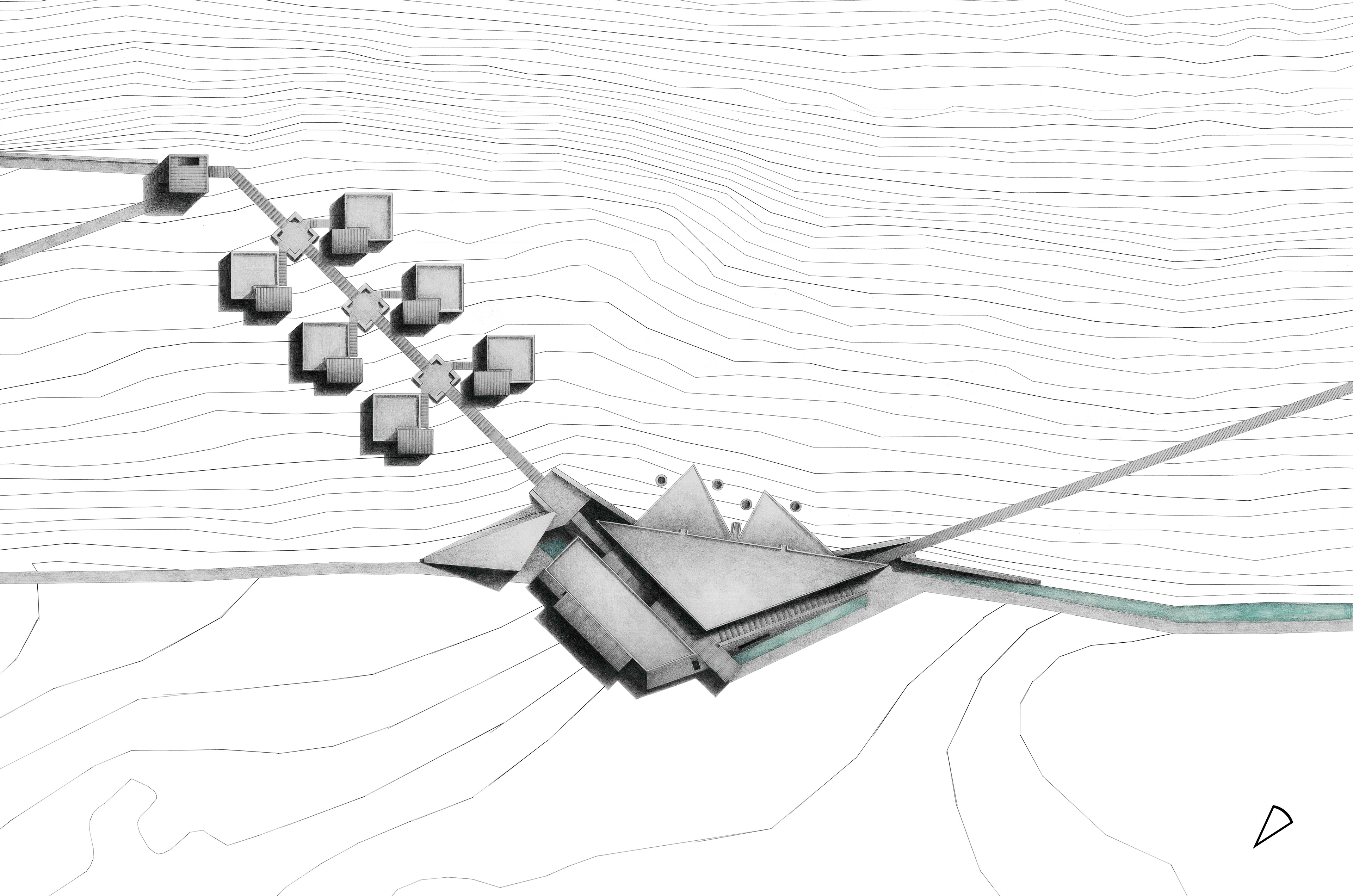
Thermal Baths and Guest Houses | Masterplan
Thermal Baths and Guest Houses | Masterplan

Thermal Baths | 1st Floor
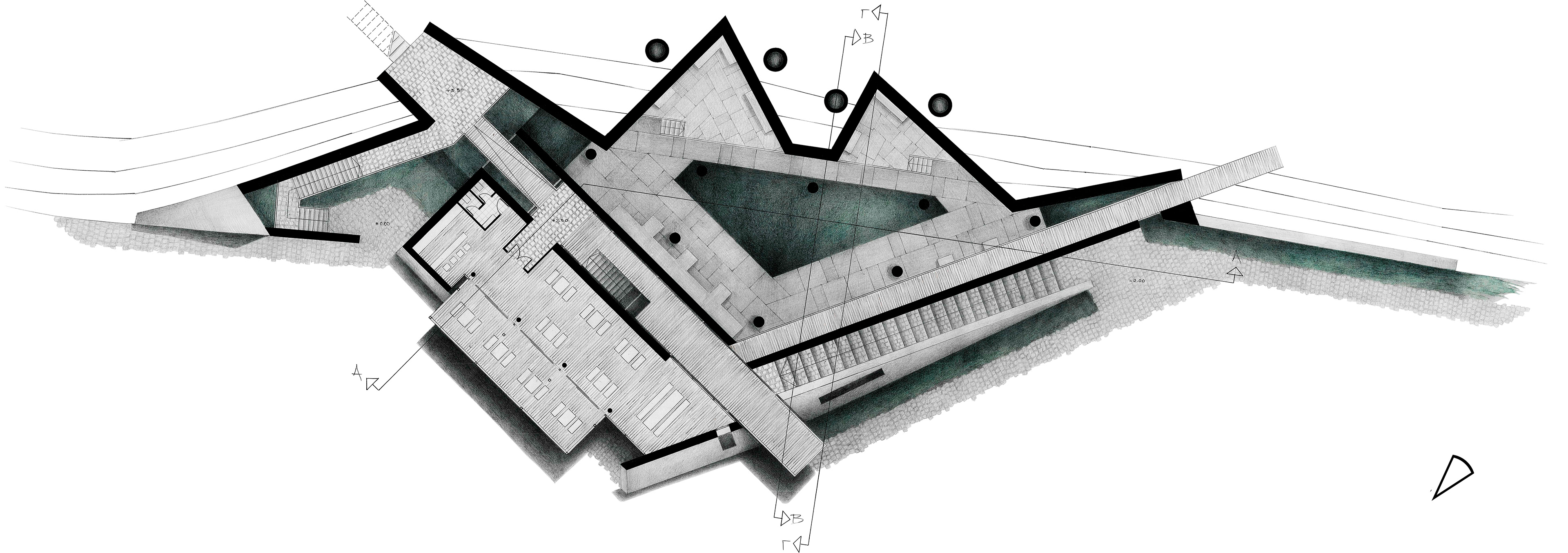
Thermal Baths | 2nd Floor
Thermal Baths | 1st & 2nd Floor

Thermal Baths | Section A-A
Thermal Baths | Section A-A

Thermal Baths and Guest Houses | Perspective Drawing
Thermal Baths and Guest Houses | Perspective Drawing
Democritus University of Thrace (DUTH)
Department of Architectural Engineering
Supervisor: George Papagiannopoulos
Advisory Board: Thomas Nikos, Kozokos Panagiotis
